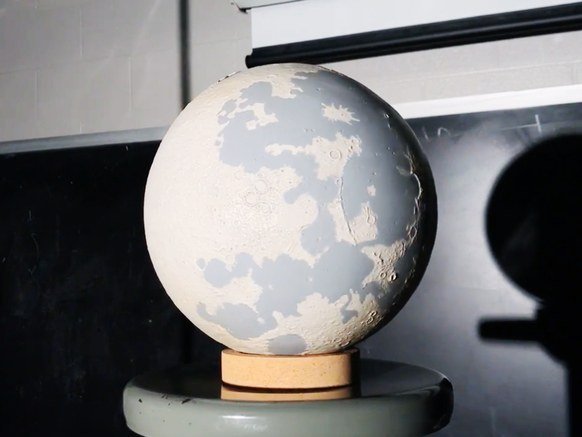
I occasionally find cool stuff tucked away in science labs. Like, say, this old moon globe. You may think, "What's so cool about an old moon globe." Well, this moon globe is unlike any other moon globe. The back is completely blank. It shows just one side of the moon, which is awesome and a great demonstration of science.
The Moon
Many people just don't give the moon much thought. They might notice a bright, full moon, but otherwise it's just there. But you can observe some really interesting things about the moon with the naked eye. You can see all the phases, of course, and sometimes you can see it during the day. Pay attention, and you even notice only one side is visible from Earth.
The moon takes not quite 28 days to orbit Earth. In a cool twist, the moon also rotates around its own axis in not quite 28 days. In other words, it takes the moon the same time to travel around the Earth that it takes the moon to spin (mostly). This is called tidal locking. The differential gravitational force that Earth exerts on the moon prevents the moon from turning away from Earth. It's as though the giant hands of Mother Earth grabbed the moon while saying, "You look at me."
All of which is to say, everyone on Earth only ever sees one side of the moon (mostly). If you want to make a map of the moon, you can only make half a map. Which brings me to this globe.
The Moon Globe
Did I mention that this globe is awesome? It is. Just look at it.
The back side is blank. Why? The answer seems obvious: It was made from Earth's perspective. As best I can tell, Edmund Scientific made this globe around 1960, shortly after the Soviet Union made the first photograph of the far side of the moon with the Luna 3 probe. And that is what makes this globe so awesome—it comes from a time when people had no idea what was on the other side of the moon. Maybe there was a golf course or ocean back there—no one knew. I find that crazy.
All of which makes this old moon globe a physical manifestation of science. It is a model of the moon, just as the gravitational force equation is a model of the interaction between two objects with mass. The whole point of science is to make models. Physical models, or conceptual models, or mathematical models, or computational models.
But models aren't perfect. Scientists build models using the best evidence available. And you can't model data you don't have. Until someone saw the far side of the moon, science could only speculate as to what was back there. The blank side of this old moon globe reminds us that models are never perfect, but they remain useful just the same.
Source: https://www.wired.com/2017/06/old-moon-globe-says-nature-science/
Not indicating that the content you copy/paste is not your original work could be seen as plagiarism.
Some tips to share content and add value:
Repeated plagiarized posts are considered spam. Spam is discouraged by the community, and may result in action from the cheetah bot.
Creative Commons: If you are posting content under a Creative Commons license, please attribute and link according to the specific license. If you are posting content under CC0 or Public Domain please consider noting that at the end of your post.
If you are actually the original author, please do reply to let us know!
Thank You!
Downvoting a post can decrease pending rewards and make it less visible. Common reasons:
Submit
Hi! I am a robot. I just upvoted you! I found similar content that readers might be interested in:
https://www.wired.com/2017/06/old-moon-globe-says-nature-science/
Downvoting a post can decrease pending rewards and make it less visible. Common reasons:
Submit